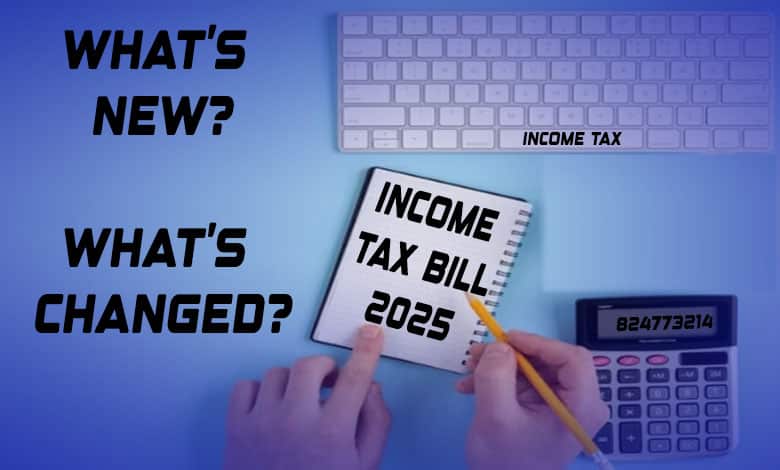
On February 13, 2025, Finance Minister Nirmala Sitharaman introduced the much-awaited Income Tax Bill 2025 in the Lok Sabha. The new legislation is set to replace the existing Income Tax Act of 1961, with a primary objective of simplifying and modernizing the country’s tax system. With the aim to make tax compliance easier and more transparent, the bill eliminates complex legal jargon and structures provisions in a more user-friendly manner.
Table of Contents
The proposed Income Tax Bill 2025 comes with several significant reforms designed to streamline the tax framework for individuals, businesses, and non-profit entities alike.
Key Features of the Income Tax Bill 2025
1. Simplification of Tax Terms
One of the major changes in the new bill is the introduction of the term ‘tax year’. This replaces the previous terms of ‘assessment year’ and ‘previous year,’ which were often misunderstood by taxpayers. According to the bill, the ‘tax year’ refers to a 12-month period starting from April 1 of each financial year. For businesses or sources of income newly set up during the year, the tax year will begin from the date of setup.
2. Taxpayer-Friendly Provisions
The new bill offers a standard deduction of Rs 75,000 for salaried individuals, with the provision of tax exemption for income up to Rs 12.75 lakh. This gives middle-class taxpayers much-needed relief by lowering their tax burdens.
Furthermore, the new bill introduces clearer capital gains provisions, offering a more consolidated approach to investments and securities. The updated provisions aim to bring more transparency to the taxation of capital assets.
3. Provisions for Virtual Digital Assets (VDAs)
For the first time, the Income Tax Bill 2025 recognizes Virtual Digital Assets (VDAs), including cryptocurrencies, under Clauses 67-91. By defining these assets, the government is bringing greater regulatory clarity to the rapidly expanding world of digital currencies. This will ensure a more formalized tax treatment for VDAs, an important step towards greater mainstream adoption of blockchain-based financial instruments.
Also Read: Income Tax Bill 2025: Key Changes, New Tax Slabs, and Impact on Taxpayers
4. Extended Time for Filing Updated Returns
The bill offers taxpayers more flexibility by extending the time frame for filing updated returns. Under the current provisions of the Income Tax Act 1961, taxpayers had only two years to file updated returns. Under the new bill, this period has been extended to four years, allowing more time for individuals to correct mistakes or omissions in their filings.
5. Streamlining of Deductions and Exemptions
The Income Tax Bill 2025 consolidates various provisions scattered across Sections 10, 80C to 80U of the old Act. These provisions, which cover tax deductions and exemptions, are now brought together in a more accessible format, making it easier for taxpayers to understand and comply with the rules.
No Major Changes in Tax Rates or Residential Status
While the Income Tax Bill 2025 introduces numerous changes, it is important to note that there are no significant changes to the existing tax rate structure. The bill primarily focuses on simplifying the framework and eliminating ambiguities in the tax code.
The residential status determination has also remained largely unchanged. The provisions for determining residential status for individuals, companies, and Hindu Undivided Families (HUFs) under Section 6 of the old Act have been rephrased in the new bill without any substantial changes.
Overhaul of TDS and TCS Provisions
The TDS (Tax Deducted at Source) and TCS (Tax Collected at Source) provisions have also been overhauled. The new bill consolidates these provisions in a concise and easy-to-understand tabular format under Section 393 and Section 394, making compliance much simpler for taxpayers.
Provisions for Non-Residents and Withholding Tax
For non-residents, the bill maintains the existing withholding tax provisions for payments like royalties, technical services, and dividends under Section 207. These provisions are now presented in a clear, tabular format for ease of reference, without any significant changes in tax rates.
Schedule Changes for Exempt Income
The provisions in Section 10 of the Income Tax Act 1961, which offered exemptions on agricultural income, family pensions, scholarships, and interest on NRE/FCNR deposits, are now covered separately in Schedule II to Schedule VII of the new bill. This tabular format will make it easier for taxpayers to understand the specific exemptions available to them.
What’s Next? Implementation Timeline
The Income Tax Bill 2025 is set to come into effect on April 1, 2026, once the necessary rules and regulations are formalized. The government has also ensured that both the old and new tax regimes will continue to coexist, giving taxpayers the option to choose the most beneficial tax structure for them.
A Step Towards a Transparent Tax System
The Income Tax Bill 2025 represents a bold step in simplifying India’s complex tax code. By restructuring provisions, removing legal jargon, and offering clearer guidelines for taxpayers, the government aims to create a more transparent and efficient tax administration system. These reforms are likely to reduce disputes, increase compliance, and ease the burden on taxpayers across the country.
As the bill awaits its implementation in 2026, taxpayers, businesses, and organizations must prepare to navigate the new system, ensuring they take full advantage of the simplified and streamlined provisions.
